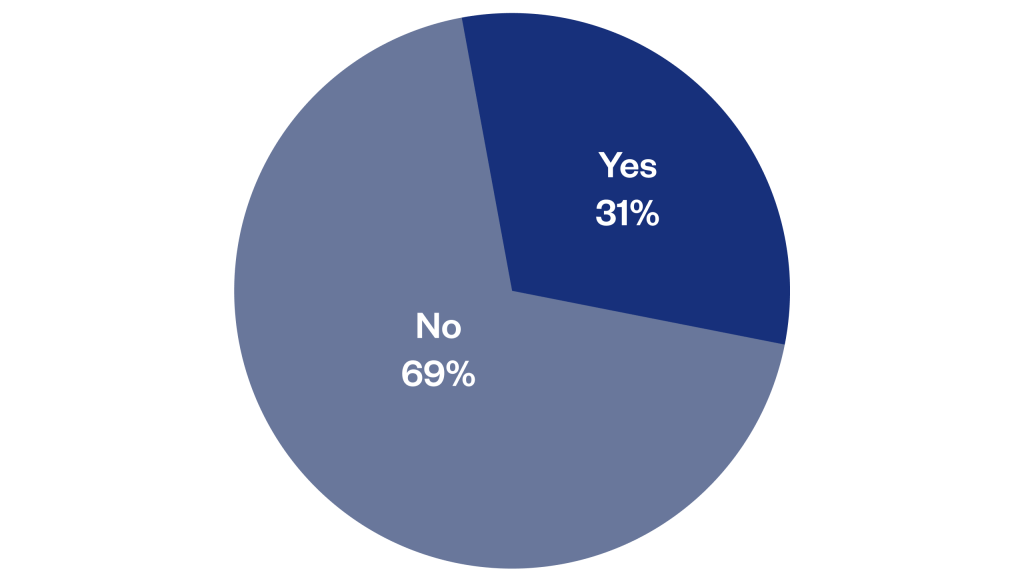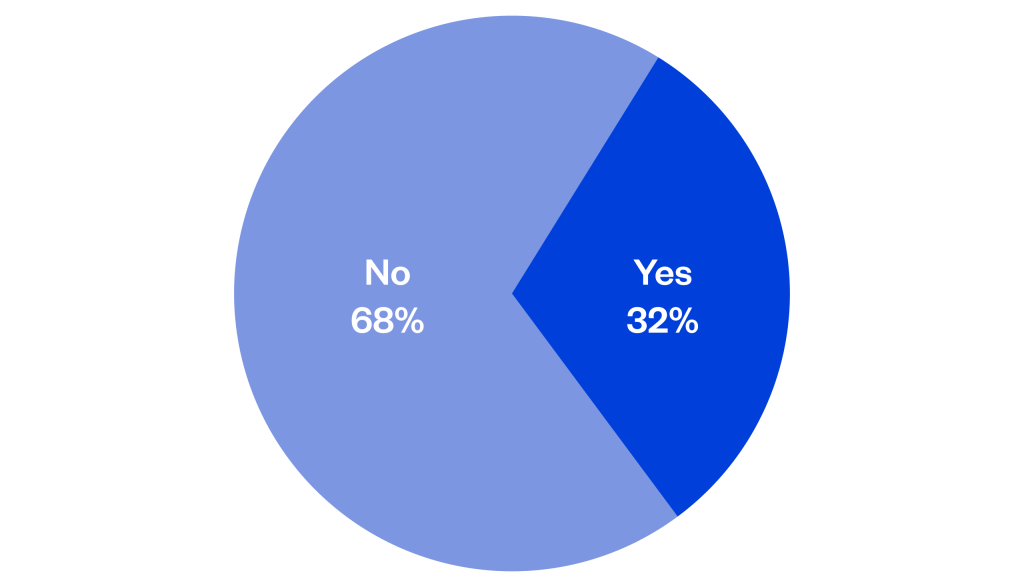Next-Gen Technology Trends: Habits, Money, and (Of Course) AI
By Caroline Ciaramitaro, January 30, 2024

How does Gen Z feel about technology today? We can make some assumptions about how the social pressures amplified by next-generation social media – along with the isolating nature of pandemic-years – have played a part in the technology habits of Gen Z. But what other variables and influences are at play? And what brands, platforms, and apps are shaping their behaviors?
To answers some of these questions, our team drew inspiration from Erika Hall‘s ‘Just Enough Research to investigate and gain a deeper understanding of Gen Z technology habits.
Our hope? That we’d unearth insights around their perspectives on AI’s evolution and gain a greater understanding of their priorities around how they spend their time and resources.
Our Process
We conducted interviews with 149 participants aged nine to 22 with the aim to understand the next generation’s motives and habitual environments, as well as how their experiences with technology inform their behaviors.
Our research journey identified five core themes that illuminate Gen Z’s relationship with technology today and expectations for the future:
- Gen Z eagerly anticipates AI’s transformational power in all aspects of life, but current applications haven’t met their expectations.
- An innate desire to connect and express creativity drives Gen Z’s platform preferences, despite the multitude of options they are presented today.
- Gen Z struggles with an intention-action gap in technology usage. There’s dissonance between how they aspire to use technology and how they actually spend their days.
- The younger generation enjoys multifunctional platforms that seamlessly blur the lines between personal and professional use.
- Gen Z assesses their tech options through a dual value lens: alignment with personal values and considering whether the options are worthy of their time and resources.
AI’s Disparity Between Perception and Practicality
We heard a wide range of emotional responses toward AI. While very few disregarded the potential impact of the technology, there’s a disparity between the perceived power of AI and its practical use. Most interactions with AI today focus on discovery, rather than replacing core functions in workflows or routines.
More than half, 68.7%, of respondents haven’t used an AI chatbot. Among the 31.3% who have, 80% prefer ChatGPT as their primary interface. Typically, they center their queries on initial stages of the creative process, such as seeking guidance when starting a research paper, devising a weekly workout plan, or structuring a document outline.
There’s a gap between AI potential and practicality.
Do you use a chatbot?

Have you used AI in other ways?

“It doesn’t get the job fully done but is a good starting point.”
Life in the ‘AI Sandwich’ Generation
Our conversations reveal a prevailing disappointment due to the disparity between expected AI capabilities and daily use cases.
A 21-year-old from North Carolina shared, “You have a team out in California considering potential use cases, but it’s not yet widespread. I’m not entirely sure what I’m missing out on.”
Some younger children, particularly those under the age of 14, approach AI with skepticism and fear, but they also express intrigue in its transformative potential. Across all ages, participants shared a perspective on the future that includes personal AI assistants and the expectation of the technology rapidly enhancing their organization and productivity. However, they currently experience a lack of native AI applications that align with this vision and eagerly await the transformative lifestyle use cases advertised to them.
When speaking with current college students, they began to self-identify as the “AI sandwich generation.” They have exposure to technology and expectations to use it in future careers, but they’re unlikely to receive formal and practical academic training, compared to their younger counterparts. Their apprehension of AI in the workplace does not come from fears of job displacement by AI itself but from concerns over their proficiency for future roles requiring AI adeptness.
One college student shared, “Younger kids will learn to use AI like we learned to use calculators, but what if we’re held back because of a lack of taught knowledge?”
Creating and Connecting Are Top Priorities for Gen Z
One might expect this demographic to favor digital reliance, being born into a post-iPhone world. However, our discussions yielded a contrary conclusion: despite growing up digitally, this generation drives itself by innate desires to create and connect.
Many shared that they initially interacted with technology by way of a parent’s iPhone camera or crafting short films with friends on their parent’s laptop using iMovie. Their engagement with technology started with creation, evident in their preference for platforms that empower individual creativity.
What is your favorite app for communicating with friends?

- What’sApp – 2%
- Instagram – 3%
- FaceTime – 4%
- SnapChat – 31%
- iMessage – 60%
When asked about their preferred communication medium, respondents ranked iMessage highest.
Their favorite apps are primarily used to relax or entertain (94.9%) and communicate with friends (94%). Secondary reasons include learning new things (37.6%) and completing schoolwork (31.6%).
In an hour of free time, 57.6% prefer talking to others, 44.1% listen to music or podcasts, 41.4% stream shows, 42.4% exercise, and 40.7% check social media.
They are self-proclaimed “communaholics,” yet paradoxically, the very technology connecting them physically often results in emotional disconnection.
The Gap Between Intention and Action
Our discussions often focus on the concern for the addictive nature of platforms, especially social media, and their impact on mental well-being. This digital-native generation recognizes the downsides of technology with both data and personal experiences, yet they remain the most tech-consuming to date.
They are not waiting for external interventions but taking proactive measures to limit their usage. This includes setting app timers, quitting certain platforms, or being mindful of aimless scrolling. They are making concerted efforts and want to be more conscious of their technology consumption.
“I quit TikTok”
“I set limits on Instagram.”
“I only message people on Snapchat now.”
“In 5-10 years, I don’t want to be on social media.”
“I feel like I can’t focus anymore.”
However, they often diverge from their intentions with their actions. The common narrative has them starting the day with phone checks, streaming Spotify continuously, and consuming content passively on platforms like TikTok, even during routine activities.
“I wake up and immediately check my phone.”
“If I’m eating alone, I’ll just watch TikTok.”
“During the pandemic, it was the only way to connect.”
“Spotify plays in the background of everything I do.”
Their attachment to devices reveals a significant gap between intended and actual use of technology. The pandemic worsened this dependency, as digital platforms became the main way to connect. This behavior, born of necessity, continues to affect their daily lives, leading to decision fatigue on how to make meaningful connections with others. But, tech use is up, and passive consumption continues to dominate.
The Blurring of Platforms
The pandemic reshaped education, leading students to integrate academic digital tools into personal creative pursuits. Examination of daily technology usage showed that education commands the longest session length, effectively merging formal education and personal expression in digital time spent.
Participants prefer multifunctional platforms that seamlessly combine design, productivity, and learning. Standout platforms like YouTube, Adobe (Illustrator, InDesign), TikTok, and Canva foster knowledge sharing and personal expression.
The study shows a shift from active creation to passive consumption on social media platforms. The next generation posts less on Instagram but sends more direct messages. They share fewer public Snapchat stories but send more “Snaps” and focus on curated private stories. They don’t post daily BeReals but spend their days watching and sharing TikToks.
Considerations: Finance and Ethics
The next generation seeks tangible value for recurring expenses, despite the popularity of subscription models. They spend judiciously but readily invest in entertainment (streaming services, music) and convenience (Prime).
They desire platforms and tools that prioritize and respect these concerns, and show keen awareness of tech addiction and data privacy implications.
The common thread is “value,” covering both ethics and utility. They consistently inquire whether a product aligns with their values and if it brings value to their lives.
The Conversation Continues
If we’re betting on the future, one certain prediction is that it will continue to advance rapidly, and we eagerly anticipate how the next generation will shape the technology landscape. We thank all contributors for the dialogue, and we look forward to continuing this journey of exploration.

